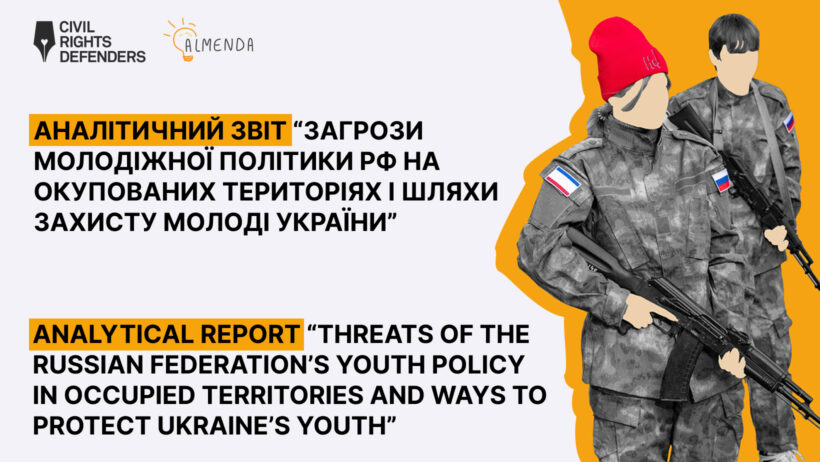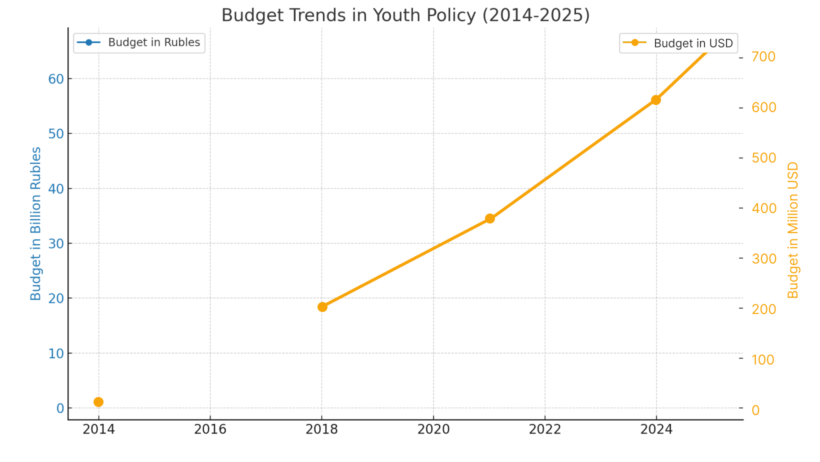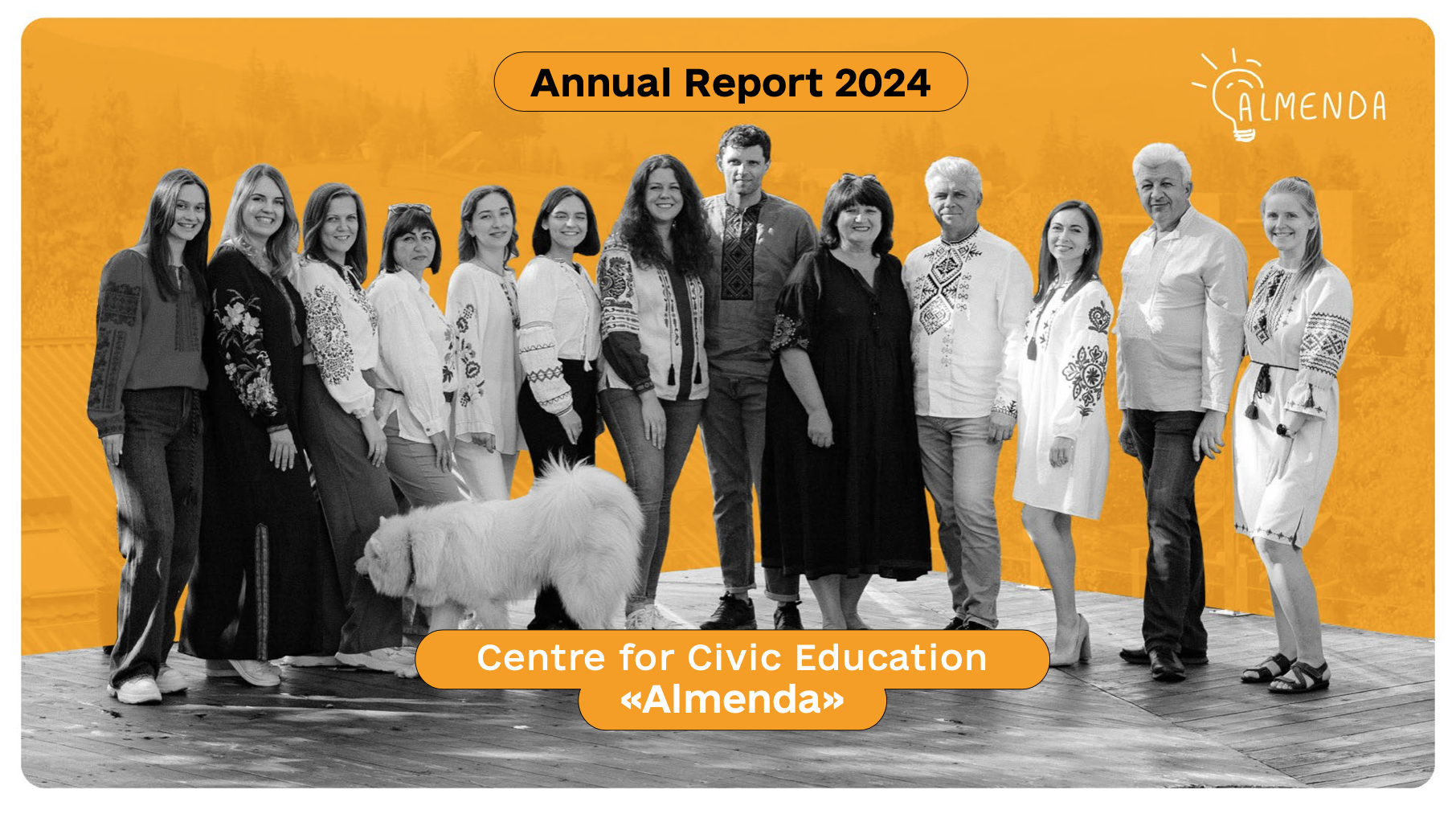

Analytical Report: “The Youth Policy of the Russian Federation as a Tool for Eradicating Identity in the Temporarily Occupied Territories of Ukraine”
Youth policy comprises a range of legislative, financial, economic, organisational, managerial, informational, analytical, human resources, scientific, and other measures implemented through interagency cooperation between federal bodies of state authority, state authorities of subjects of the Russian Federation, local self-government bodies, with the participation of civil society institutions, legal entities regardless of their organisational and legal forms, and citizens of the Russian Federation, including individual entrepreneurs. It aims to create conditions for the development of young people, their self-realization in various spheres of life, as well as civic-patriotic and spiritual-moral education of young citizens, with the goal of achieving sustainable social and economic development, global competitiveness, and national security of the Russian Federation.
In 2014, after the occupation of the Autonomous Republic of Crimea and the city of Sevastopol, and the start of military operations in Donetsk and Luhansk regions, additional resources were directed towards fostering patriotism and creating a mobilisation reserve, both in Russia and in the temporarily occupied territories (hereinafter referred to as TOT) among young Ukrainian citizens. Even in Russia’s National Policy Strategy, it is emphasised that the occupation of the Autonomous Republic of Crimea and the city of Sevastopol triggered a significant surge in patriotism within Russia.
Significant funds were allocated to fuel this wave of patriotism. As analysed by the NGO “Centre for Civic Education ‘Almenda’”, between 2014 and 2018, the Russian Federation’s budget for youth policy ranged from 1.13 billion roubles (approximately USD 12.4 million) to 18.47 billion roubles (approximately USD 203 million). However, from 2021, a substantial increase was observed, with expenditures exceeding 34.3 billion roubles (over USD 377 million). As of 2024, over 56.1 billion roubles (more than USD 617 million) have been allocated, and for 2025, the Russian authorities have earmarked 66 billion roubles for youth policy. The increase in funding from 2021 is likely linked to preparations for the full-scale invasion of Ukraine and the need to “properly” shape young people’s perceptions to align with Kremlin decisions. This also explains the continued rise in funding during the years of active military aggression.


Russia’s full-scale invasion of Ukraine in 2022 led to the unlawful annexation of parts of Ukraine’s territory into the Russian Federation on 30 September 2022 (including areas of Donetsk, Luhansk, Zaporizhzhia, and Kherson regions). As a result, part of Ukraine’s youth came under complete Russian control, and Russian legislation, including that related to youth policy, began to be enforced in the occupied territories. On these territories under Russian control, branches of Russian youth movements were swiftly established, along with the creation of local organisations. Youth policy in the so-called “new regions” has become a strategically significant topic in Russian discourse. According to Russian data, as of 1 February 2024, the occupied parts of Luhansk, Donetsk, Zaporizhzhia, and Kherson regions are home to over 5 million people, including more than 600,000 young people aged 18 to 29. One of Russia’s key objectives is to encourage these young people to actively participate in the development of their “new homeland”.
The Russian authorities are allocating significant resources to achieve this objective. In 2023 alone, youth in the occupied areas of Donetsk region received approximately 29 million roubles from the Russian government to implement their ideas. Through winning the Presidential Grants Fund competition, eight projects by non-profit organisations in occupied Luhansk were funded with a total of over 13.5 million roubles. Nearly 4 million roubles were allocated for social projects led by students in the occupied parts of Zaporizhzhia region, while 2 million roubles were granted to non-profit organisations in Russian-controlled areas of Kherson region. Under the comprehensive youth policy development programme “Region for the Young”, more than 276 million roubles have been allocated for 2025 to create opportunities for youth self-realisation and establish eight modern youth spaces. Of this amount, over 80 million roubles will go to occupied Luhansk, more than 88 million roubles to Donetsk, over 38 million roubles to Zaporizhzhia, and more than 69 million roubles to Kherson region.
In June 2024, Russian Deputy Prime Minister Dmitry Chernyshenko stated that the “new regions” have been fully integrated into Russia’s youth policy system. He highlighted that, through the “Region for the Young” programme, over 336 million roubles were allocated in 2024 to comprehensively enhance youth policy. This indicates that the pressure on Ukrainian youth is only set to intensify.
- Youth policy in the Russian Federation: general characteristics, organizations and main directions;
- Youth policy in the TOT;
- Responsible persons (officials of the Russian Federation and TOT).
Report was prepared by the Center for Civic Education “Almenda” within the framework of the project “Russian Youth Policy as an Instrument of Indoctrination and Militarization of Children”. The content of this document is the sole responsibility of the Public Organization “Center for Civic Education “Almenda” and does not necessarily reflect the position of Civil Rights Defenders.



